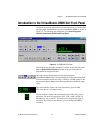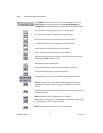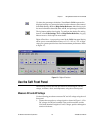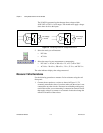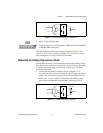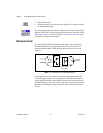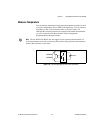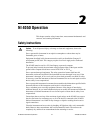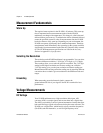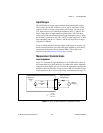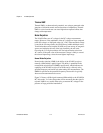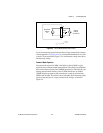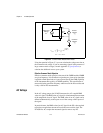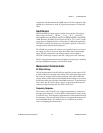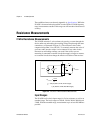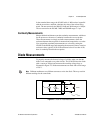
Chapter 2 NI 4050 Operation
NI 4050 User Manual 2-2 www.ni.com
Measurement Fundamentals
Warm Up
The required warm-up time for the NI 4050 is 30 minutes. This warm-up
time is important because measurements made with the NI 4050
multimeter can change with temperature. This change is called a thermal
drift and affects your accuracy. To minimize the effects of thermal drift and
ensure the specified accuracies, take all measurements after the NI 4050
has had a chance to fully warm up. Depending on your environment, the
NI 4050 can operate significantly above ambient temperature. Therefore,
measurements made immediately after powering up the system can differ
significantly from measurements made after the system has fully warmed
up. The NI 4050 temperature specifications are listed in the Accuracy
sections in Appendix A, Specifications.
Selecting the Resolution
The resolution on the NI 4050 multimeter is programmable. You can select
from three different resolutions: 5 1/2 digits, 4 1/2 digits, or 3 1/2 digits.
These settings allow you to trade off speed for resolution. The 5 1/2 digit
setting has the highest resolution and slowest reading rate, while the
3 1/2 digit setting gives you the least resolution and fastest reading rate.
Measurement mode and range affect the reading rate by requiring different
conversion times to obtain a given resolution for the different modes and
ranges.
Grounding
When measuring ground-referenced signals, connect the
ground-referenced side of your signal to the IN HI + terminal for best
performance.
Voltage Measurements
DC Voltage
Your NI 4050 multimeter uses a high-resolution delta sigma, A/D
converter (ADC) to sample signals and convert them into a digital form.
The ADC is preceded by a series of gain and attenuation circuitry that allow
both small and large signals to be measured using the same converter. The
NI 4050 uses a digital filter, which heavily rejects powerline frequencies
(50–60 Hz) and their harmonics, as well as high-frequency noise.



